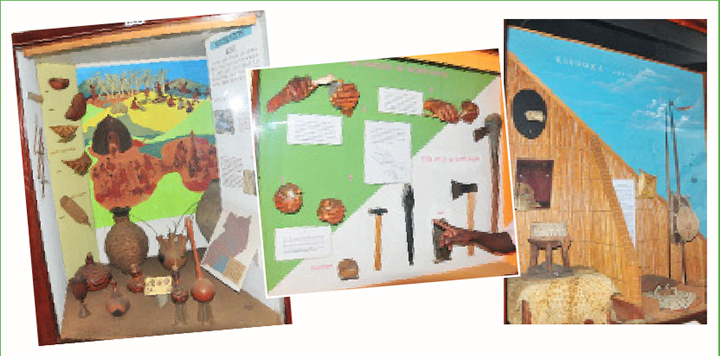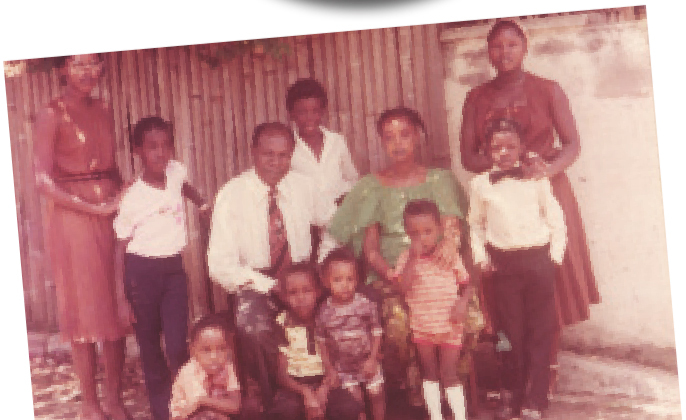Sekintu lived to preserve our cultural heritage
Sep 24, 2020
“It was him that assembled the exhibits of the Stone Age, Iron Age and ethnography sections of the museum.”

ARTS & CULTURAL
He came, lived and departed quietly. That is probably why you have not heard about Charles Morris Sekintu.
But even if you have, chances are you would not have cared much. Sekintu, who died of prostate cancer in February, 2013, was one of Uganda's unsung heroes.
A leading artist of his time, he was the first indigenous curator of the Uganda Museum and a trainer of many professionals in museum work.
He helped design the old Buganda emblem. He also established and ran museums in Kenya and Swaziland.
He is the kind of person that the thousands of people who have visited the museum have met — through his work — but never actually got to see.
Sekintu struggled to promote Uganda's cultural heritage in a largely unsupportive environment.
In many ways, his onerous efforts symbolise the struggles of the arts and culture to remain relevant in a society that could not care less.
At the time of his death, Sekintu lived in his once lavish but now ageing mansion in Mpererwe, a stone's throw away from where he was laid to rest.
His journey
According to Gideon Sekintu, one of the deceased's sons, Sekintu joined the Uganda Museum in 1951 as an artist technician.
The museum then was housed at the Margaret Trowel School of Industrial and fine arts at Makerere University.

"He was part of the staff in 1953 when the museum moved to its present location on Kira Road," he says.
In 1958 he attended courses in museum conservation, archeology and photography at the Commonwealth Institute.
In 1965, Sekintu became the first indigenous curator of the Uganda Museum, helping to sustain very high standards that had been established by his European predecessors.
He worked very hard to collect artefacts and document historical facts about Uganda.
A skilled sculptor himself, he sometimes molded some of the pieces that currently sit on display in the museum.
"It was him that assembled the exhibits of the Stone Age, Iron Age and ethnography sections of the museum," says Rosemary Mwanja, the commissioner for museum and monuments in the tourism ministry.
Today, thanks to Sekintu, the museum teems with well documented visual representations of Uganda's history and culture.
From the Stone Age images of the early man to the very first technologies in Uganda; from the ancient forms of traditional architecture, food, music and religion, Sekintu's collection offers a unique insight into the rich heritage of our country.
As a result of his stewardship, Mwanja explains, the Uganda museum became an important centre of reference throughout the continent, attracting not only visitors, but also researchers and students from different parts of the world.

"We got students from as far as Nigeria, who came to learn about museum work here," recalls Mwanja who was one of Sekintu's trainees.
The museum also had an outreach programme that popularised lessons on museum work and culture in different parts of the country.
There was a mobile van that went around the country doing this job," says Mwanja.
Sekintu also opened up the museum to artists, enabling talented painters, sculptors and others to showcase their work to the public.
Apart from creating more public interest in the museum and its activities, this boosted the careers of many of these talented people.
Forced to flee
All this was possible because the museum then operated as a semi-autonomous entity under the curator and a board of trustees.
But when Government took over the management of the museum, under the department of antiquities in the 1970s, everything slowed down.
Funding to the museum activities was reduced and many of the innovative programmes that Sekintu had been supervising stalled.
Added to the persecutions of the time, including an attempt on his life under president Idi Amin's regime, these developments forced Sekintu to flee the country.
In the mid-1970s, he went to Kenya where he got a job in the national museum.
He later helped set up and run regional museums in Kisumu, Meru and other parts of the country.
"Sekintu's innovation and experience turned Kisumu Museum into one of the best in the region," Nuwa Wamala Nnyanzi, an artist who worked in Kenya for a long time recalls.
Sekintu later moved to Swaziland, where he managed the national museum for nearly six years before returning to Uganda in the late 1980s.
Return to nothing
Sekintu returned in 1988 to find the Uganda Museum closed for repairs.
He took up the challenge of reviving it. He recruited new staff, trained them and helped find funds for the repairs.
By 1991, it had sprung back to life. He did all this with very little support.
Mwanja confirms that, indeed, Sekintu sometimes used his own money to operate the museum.
This apathy on the part of the Government eventually weighed him down.
He retired in 1993, but continued to work on a few contracts and provide consultancy services to the museum.
One of his last assignments was advising on the establishment of Igongo Cultural Museum in Mbarara.
He worked on this project with Dr. Ephraim Kamuhangire, the former commissioner of museums and monuments and the then presidential advisor on cultural matters.
As a dedicated artist, he gave his best to Uganda. As a family man, he gave the best to his 17 children.
"He taught us to work hard and be responsible individuals," says Sam Sengo, one of his sons.
His wife Dorothy says Sekintu struggled financially in the last couple of years before his death, but tried his best to cater for his family.
"He was happy that his children cared for him to the last hour. It was his wish that we remain united," says Dorothy his wife.
Sekintu was the unsung hero of Uganda's art and culture. Only history will vindicate his enormous contribution to our society.
The story was first published on April 14, 2013
